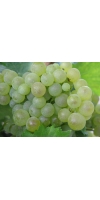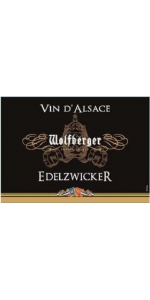Folle Blanche

Folle Blanche is related to Gouais blanc and is also known by the name “Picpoule”. It is however, not related to the Picpoul variety from Languedoc or Gros Plant and Enrageat Blanc. This light skinned grape variety has been mostly substituted with the hybrid Baco blanc because of damage from phylloxera. After the disease ravaged Folle Blanche vines, growers replaced the vincs with the Ugnu-Blanc variety. The Folle Blanche variety is produced in the Loire Valley of France near Nantes to create the wine Gros Plant du Pays Nantis. The Loire Valley region suits almost 8,000 acres of the Folle Blanche variety and it is planted in vineyards throughout France. The strong, dry and acidic wine goes nicely with shellfish. Folle Blanche is also the variety used in Cognac. Folle Blanche works well to create brandy, but because it ripens late in the year and is sensitive to rot and disease, it is not a popular choice for many growers. In the Loire region of France, Folle Blanche is sometimes used to create a varietal wine, but typically Folle Blanche is used to blend with other grape varieties. Folle Blanche produces light, crisp wines that are acidic and it typically generates a large amount of juice. When ripe, the fruit is semi round and is yellowish green in color.
Wolfberger Alsace Edelzwicker is made from 40 % Pinot Blanc, 30% Riesling, 15% Gewurztraminer and 15 % Muscat
Edelzwicker has a nose of grilled almonds and walnuts, with a light floral hint following. The first sip shows its true character: fresh and lemony with vegetal, herbaceous flavor. It is round and easy drinking, not overpowering and finishes clean.
Each grape variety is harvested individually in early or mid-October on the most suitable date for each vineyard.
It is a good companion for food without ever dominating it. In Alsace it is served by the glass or in large jugs to partner regional specialties. In general Edelzwicker goes well with fresh salads, cold or warm starters, but also with oysters, mussels and seafood. It should always be served chilled, around 10 ° C.
- back
Selected Options
Grape Types
Categories
Pricing
Countries
Regions
Grape Types
Wineries
Organic/Free Shipping
Kinsella Estates Jersey Boys Cabernet Sauvignon is made from 100 percent Cabernet Sauvignon.
Winemaker: Thomas Rivers Brown
Pure 100% cabernet Sauvignon, this vineyard continually astonishes. Loads of loamy soil notes followed by blue and black fruits give this cabernet massive depth and beautiful integrated tannins. Milk chocolate, crème de cassis and tobacco give this massive wine the depth you come to expect with Napa cabs, but it is all Sonoma County, all from our magnificent little private valley which sees sun all day! We buy no fruit; we sell no fruit.
Jersey Boys Vineyard (Kevin Kinsella is the largest individual investor in the hit Broadway show "Jersey Boys")
Jersey Boys is a six-acre vineyard that was replanted in 2008 with four different clones of Cabernet Sauvignon, handpicked by winemaker Thomas Rivers Brown.
Wow…just Wow!! This wine has it all. Not as “big” as past vintages this wine is gangbusters right out of the gate. Ripe blackberry, juicy and rich with a wonderful chocolate core. Has a dusky quality that we have seen in this vineyard in the past that tricks your brain into thinking the wine is older than it is. It’s pure. It’s rich. It’s delicious! Winemaker Thomas Rivers Brown
Any vegetable or meat in the grill. Delicious with Chocolate as well.
Mas Redonne Tournier Bandol Luisa Jeanne is made from 95% Mourvedre and 5% Syrah.
The wine takes its name from a goddess, Luisa Jeanne. It has a deep red color with dark brick hues, a very intense and complex nose with strong sensations of dark fruit, compote, spice, earth and garrigue, with a minty touch. Palate intense, complex and silky, full and opulent with olfactive sensations and a slightly mineral saline aftertaste accompanied by rich but ripe tannins wrapped in a fruity robe. Approachable, long, harmonious, elegant.
Late manual harvesting of left grapes, their selection according to ripeness, harvesting parcel by parcel, variety by variety, separate vinification. Long fermentation with natural yeasts to oxygenate the must, gentle extraction of color and tannins, decanting and dipping of the matoline cap to absorb the tannins and make the wine silky and expressive. Aged for 18 months in old foudres.
A gastronomic wine for major occasions, ideal for red meat, game, charcuterie, cheese, chocolate and Provençal cuisine.
The wine takes its name from a goddess, Luisa Jeanne. It has a deep red color with dark brick hues, a very intense and complex nose with strong sensations of dark fruit, compote, spice, earth and garrigue, with a minty touch. Palate intense, complex and silky, full and opulent with olfactive sensations and a slightly mineral saline aftertaste accompanied by rich but ripe tannins wrapped in a fruity robe. Approachable, long, harmonious, elegant.





